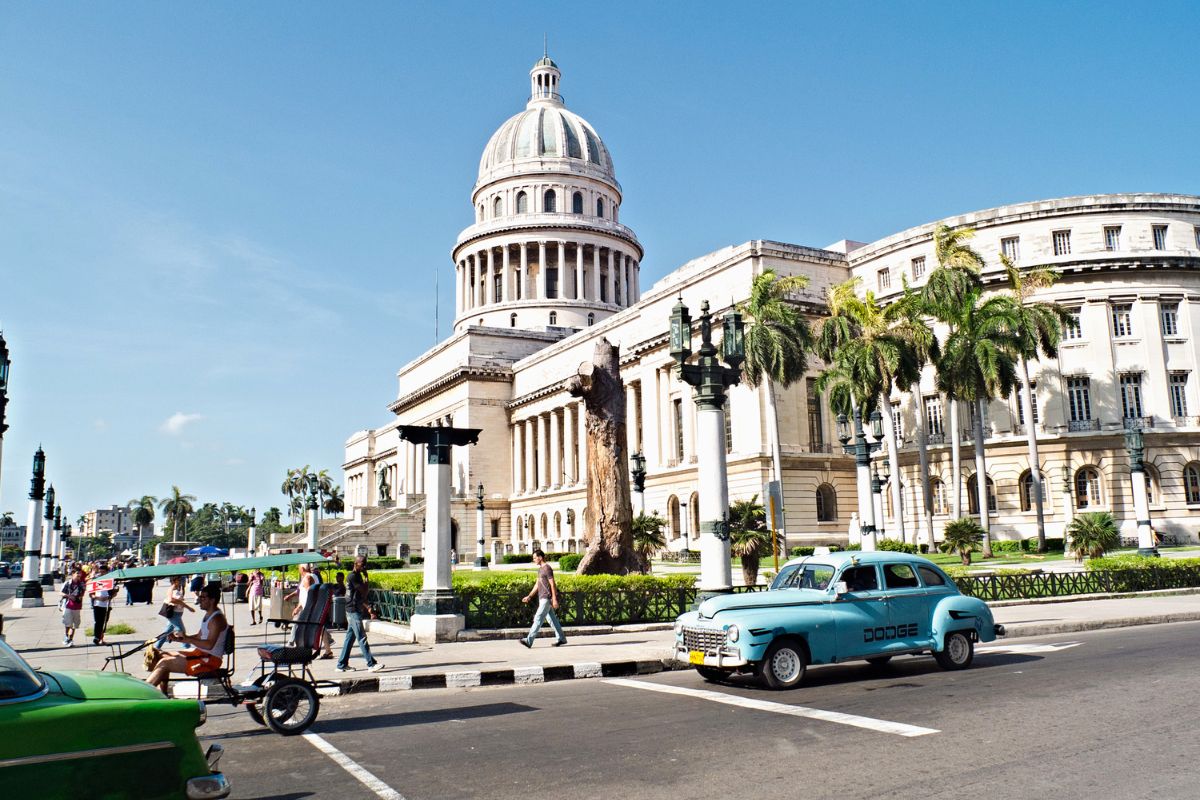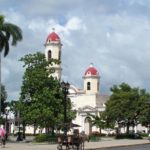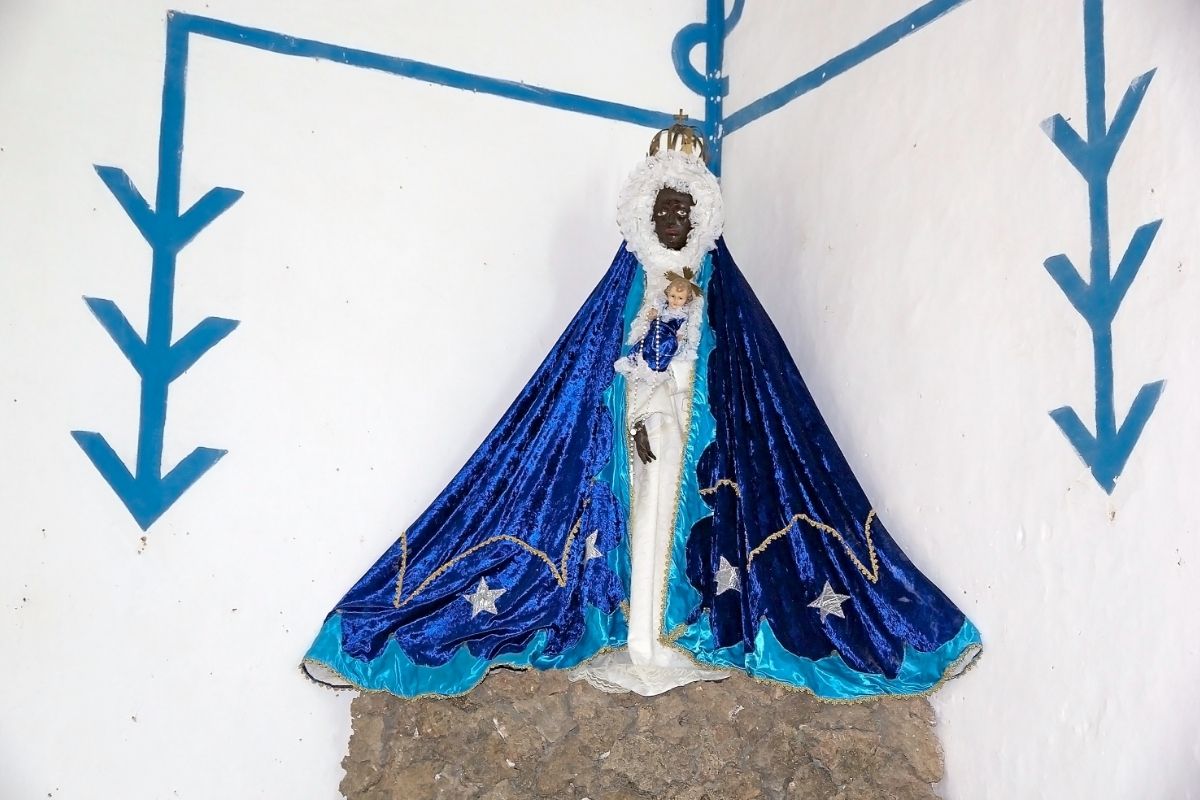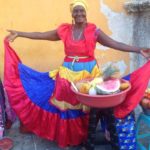Despite the restrictions imposed on religious beliefs following the Communist revolution in 1959 faith of many descriptions continued to thrive in Cuba.
Today there are more than fourteen distinct religions in the country which nowadays is more tolerant toward them.

From Roman Catholicism to Buddhism there is a wide variety of expressions of faith on the island of Cuba which all add to its rich and vibrant culture.
Let’s take a look at what religious beliefs there are in Cuba.
Christianity
The Christian faith is the single largest religious belief in Cuba. It represents Roman Catholicism, Protestantism, as well as the Greek Orthodox and Russian Orthodox faiths.
Christianity came to Cuba with Diego Velázquez de Cuéllarr the Spanish conquistador who founded the Catholic Church there with the priest Fray Bartolomé de las Casas who was commonly known as the “the Protector of the Indians”.
Catholicism took hold first and was later followed by the Protestant religion.
Roman Catholicism
More than 60% of the population of Cuba identifies as Roman Catholic although much of this may be more cultural Catholicism than actively practiced.
Cuba’s Catholic Church is part of the global church governed under the papacy, currently of Pope Francis.
The Cuban Bishops Conference governs the Catholic Church body in Cuba presiding over approximately 60 million Cubans. There are 11 dioceses and 3 arch dioceses on the island.
Catholics in Cuba have much more religious freedom than in other communist countries.
Protestantism
Protestantism arrived in Cuba shortly after Catholicism but many of their churches failed to flourish until the arrival of American missionaries in the 20th century.
These missionaries even established home churches where people could come to worship in private homes.
Membership of Protestant churches in Cuba is said to be around 5% of the population. The majority of these are from Pentecostal and Baptist churches.
Although the Protestant movement also includes Evangelical, Episcopalian, Presbyterian, Anglican, and Methodist churches.
Greek Orthodox
The early Christian Church developed in the East of Europe around Constantinople and used the Greek language for most theological writings. Hence Eastern Orthodoxy came to be called Greek Orthodoxy.
The Greek Orthodox church in Cuba is one of the Christian denominations prevalent in the country and in 2004 the first Greek Orthodox Church was built in Havana.
Russian Orthodox
The Russian Orthodox Church also known as the Moscow Patriarchate is the largest Eastern Orthodox Christian Church and is self-governing, meaning it is not subservient to Rome.
In Cuba the Russian Orthodox Church is one of many smaller Christian denominations having a large Cathedral in the center of Havana.
Jehovah’s Witnesses
Jehovah’s Witnesses while a Christian denomination are not part of mainstream Christianity, with differing beliefs on some aspects of the faith. It has around 8.5 million followers worldwide.
In Cuba, they form a small part of the larger Christian community and have about 96,000 practitioners. This accounts for around 0.85% of the population.
In 1974 the practice was banned and members imprisoned for refusal of military service.
In 1994 a branch office was opened up in Havana and by 1998 they were allowed to meet in bigger conventions in major Cuban cities.

Church of Latter Day Saints
The Church of Latter Day Saints, also referred to as the Mormon church, is a non-trinitarian Christian church which considers itself the restoration of the original church founded by Jesus Christ.
There are several branches and one district of the movement in Cuba with hundreds of adherents who refer to themselves as latter day saints.
Quakers
The Religious Society of Friends or Quakers are a Protestant Christian denomination who believe that everyone has the ability to experience the light within or see God in everyone.
Some are inspired by the First Epistle of Peter but not all Quakers believe in the existence of God. The Quaker community in Cuba makes up part of the 5% of Protestant believers.
Judaism
Jews have lived on the island of Cuba for hundreds of years and some Cubans can trace their Jewish ancestry back to those who came as colonists, the Marranos.
These people were forced to practice Christianity but secretly continued to practice Judaism.
In the 1920s-30s there were around 24,000 Jews living in Cuba but following the revolution more than 94% of them left for the United States. Many more have since left for Israel.
Islam
According to a survey in 2011 there were 10,000 Muslims living in Cuba making up 0.1% of the population, most of them were converts to the religion.
Many Muslim Pakistani students travelled to Cuba to study at their schools.
In 2001 the Assistant Secretary-General of the Muslim World League went to Cuba to get permission to establish an Islamic organization there.
In 2015 the first prayer room for Cuban Muslims was opened, and the first mosque was under construction.
Hinduism
Hinduism is one of the world’s oldest religions with customs and traditions going back more than 4000 years. Today about 900 million people practice this religion with 95% living in India.
It is unique in that it is a combination of many traditions and philosophies rather than being a single religion. Cuba has a tiny proportion of Hindus at around 0.2% of the population.
Buddhists
Buddhism is not strictly a religion but more a set of philosophical beliefs. It has its origins in India and is based on the teachings of Guatama Buddha who lived in the last half of the first millennium BCE.
Practitioners in Cuba are probably no more than 1,000 people, but there is a growing awareness of the three broad schools of Buddhism, Theravada, Mahayana, and Vajrayana.
Santeria
Santeria is a religion that developed in Cuba in the late 19th century. It is also known as Regla de Ocha, Regla Lucumí, or Lucumí.
It came about through the process of syncretism between a traditional religion of West Africa called Yoruba, Catholicism and Spiritism.
Yoruba came from the slaves who were transported to Cuba to work on the sugar plantations from Nigeria.
Traditional Yoruba divinities, oricha are equated with Roman Catholic saints and each person is believed to be personally linked to a particular one who influences their personality.
Followers also believe in a transcendent creator deity, known as Olodumare. Practitioners of Santería are mainly found in Cuba’s Matanzas and La Habana provinces.
Agnosticism & Atheism
More than 18% of Cubans describe themselves as agnostic. Agnosticism is the view that the existence of God is unknowable or unknown.
Over 5% of Cubans declare themselves to be atheists. Atheism in its broadest sense is the absence of belief in any form of deity.
In Conclusion
The vibrant and colorful culture of Cuba has been widely influenced by many religions, traditions and customs.
Its rich history is peppered with the rise and decline of various beliefs some of which have been formed originally on the island of Cuba.
Roman Catholicism continues to be their largest religion and the country’s history is inextricably linked with this belief system.
But Cuba is filled with followers of many faiths and those with none at all making it a place to visit no matter what your beliefs.
- What Is The Largest Island In Cuba? - September 19, 2022
- Havana – Why Is It Cuba’s Most Exciting City? - September 19, 2022
- Cheapest Time To Visit Cuba (Ultimate Guide) - September 19, 2022








